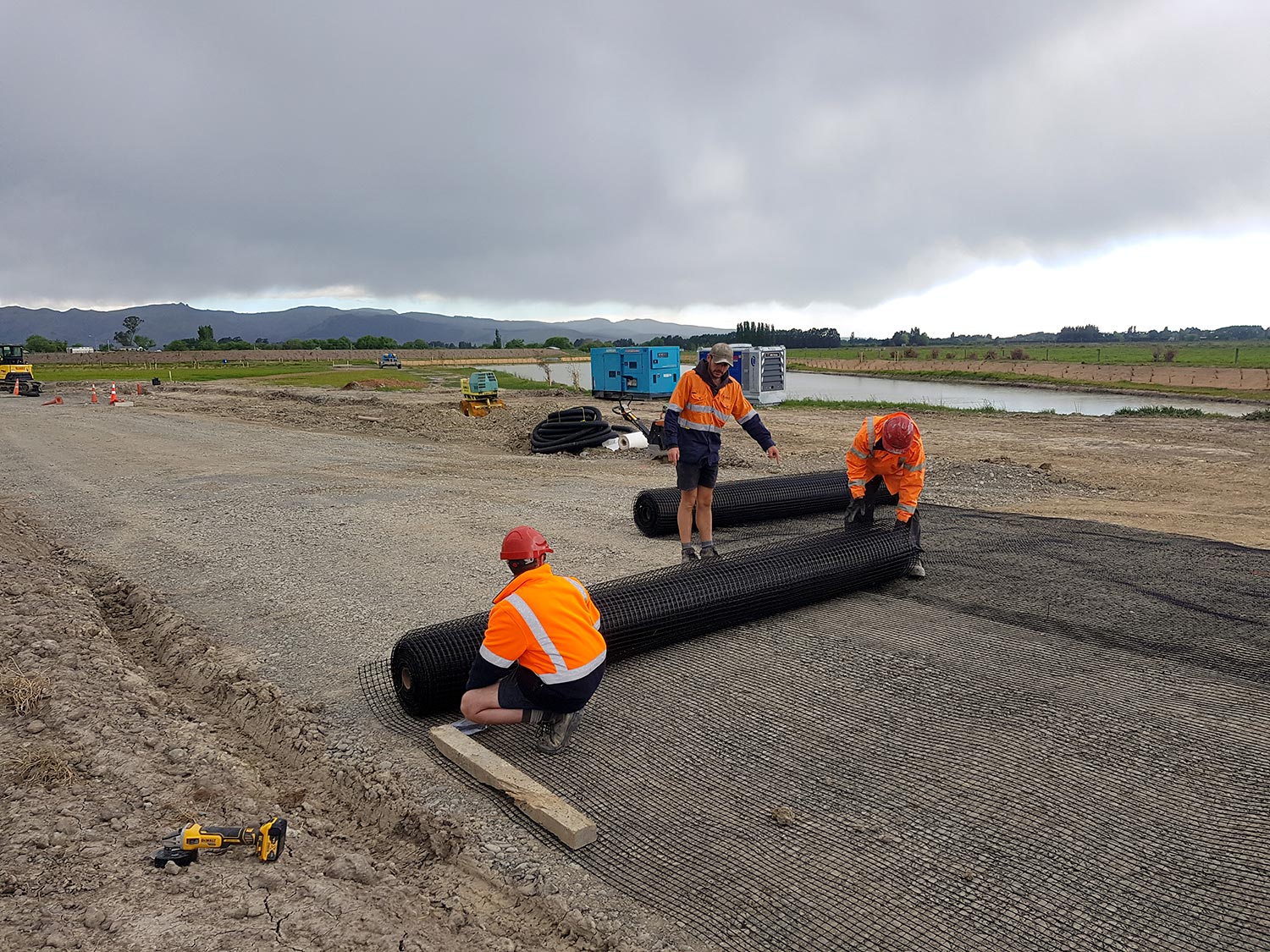Quantifying the benefit of geogrid in a New Zealand pavement
For many years you have likely heard of the benefits of geosynthetic reinforcement in road pavements, and maybe even experienced it first hand, but there have been very few tools that allow engineers to incorporate these known benefits into a pavement using actual test data and reputable methodologies.
Cirtex, along with our international supply partners have had many decades of experience with geosynthetics in pavements and have recently developed a revised version of our innovative CAPLab pavement design tool, CAPLab2020.

CAPLab2020
CAPLab2020 is an innovative and user-friendly tool which allows us to analyse a pavement section using the known benefits of a geogrid. It produces an output with the geogrid stabilised section alongside an unstabilised section so you can see graphically on the screen the advantages of the geosynthetic.
In New Zealand pavements have typically been designed either with Circly, which is a mechanistic pavement design and analysis tool for flexible pavements, or sometimes with a simplified chart such as AustRoads Figure 8.4, or a similar agency chart from a local road controlling authority. However, neither of these approaches allow us to directly quantify the benefit of a geosynthetic, even if this benefit is demonstrated by full-scale field and laboratory testing.

Enhanced performance of Tenax 3DT
The NZTA released in 2017 a new publication called “New Zealand guide to pavement structural Design” by Martin Gribble. This publication carried forward the recommendation from the previous NZTA supplement to the AustRoads pavement design guidance as regards geosynthetic reinforcement as follows: –
“It is up to the geosynthetic supplier to provide relevant and credible evidence that such savings are applicable for the particular product in question. The saving in pavement thickness must not exceed the lesser of 150mm or one third of the pavement thickness irrespective of the design process used. In addition, the reduced depth must be realised in the subbase layer and not the basecourse layer”
This guidance gives us a robust methodology to work to, however, is very conservative considering the performance benefit of modern geogrids such as the Tenax 3DT grids, especially in deeper pavements with multiple grid layers. This innovative new product which incorporates excellent junction efficiency and radial stiffness as well as enhanced interlock from the 3-dimensional ribs has the required full-scale testing to demonstrate actual benefit as required by the above mentioned guide.
How do we practically apply this to pavement design in New Zealand?
The CAPLab2020 pavement design tool uses the AustRoads design charts as the basis of the unstabilised section, then incorporates the specific benefit of the Tenax 3DT geogrids as a layer coefficient ratio derived from full scale testing on the specific geogrid being used and outputs a geosynthetic stabilised pavement thickness to compare with the unstabilised section.
Due to the impressive performance of the Tenax 3DT grids, in most cases this will show a greater reduction than the 30% allowed for in the NZTA guidance. Therefore, the CAPLab pavement design tool will also give another option of a pavement that is constrained to the maximum reduction suggested by NZTA. In this situation the pavement section, which is deeper than the fully optimised section, will have substantial built in resilience.
Call us on 0800 247 839 or email us support@cirtex.co.nz for assistance with your next pavement design. CAPLab2020 is currently being used in-house by the Cirtex design team and now available to users who have registered for the Cirtex Hub. Register here.


